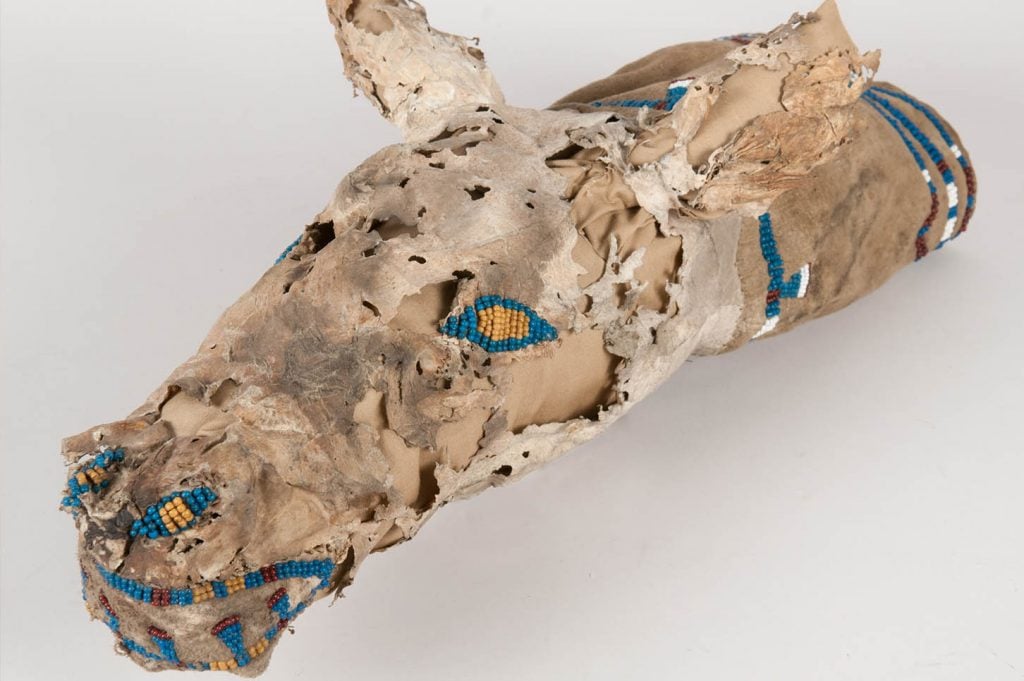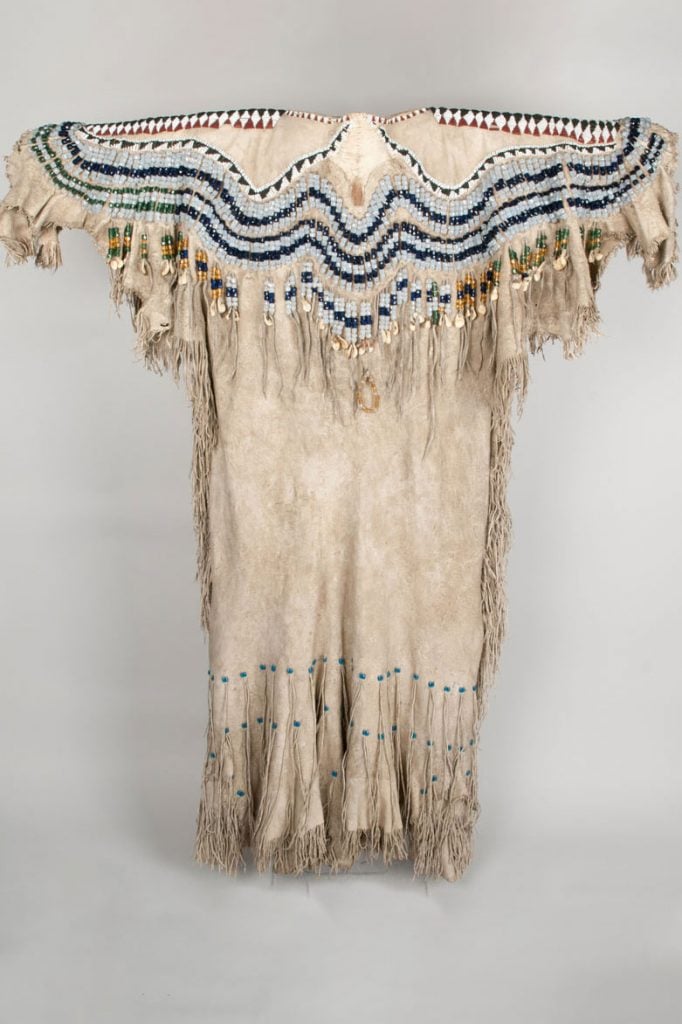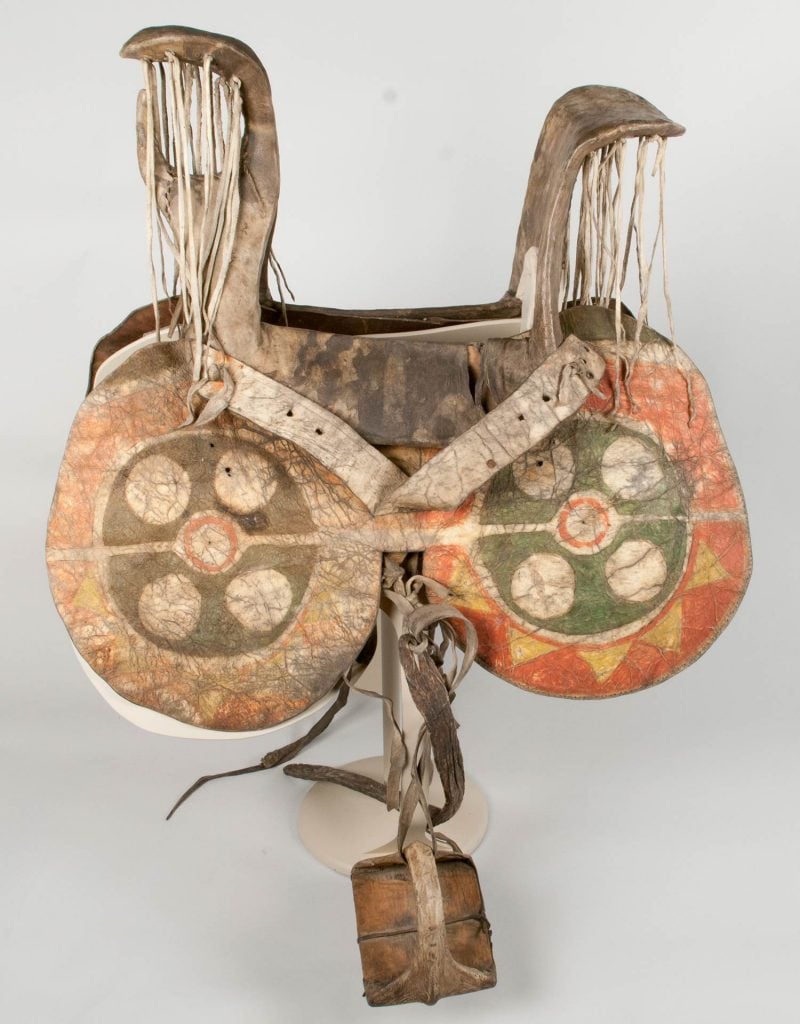Museums & Institutions
More Than 20 Years After an Ohio Museum Forced a Native Group to Buy Its Own Artifacts Back, It Has Repaid the Tribe
The tribe rushed to buy back its own artifacts in 1996, and has now finally been reimbursed.

The tribe rushed to buy back its own artifacts in 1996, and has now finally been reimbursed.

Caroline Goldstein

The Ohio History Connection, formerly known as the Ohio Historical Society, has reimbursed the Nez Perce tribe for a collection of native objects it forced them to buy back in 1996. The payment was the latest action in an effort to rectify historical injustices.
Earlier this year, in a ceremony on June 25, the Nez Perce Tribe and the Ohio History Connection jointly celebrated the 25th anniversary of the return of the formerly named Spalding-Allen Collection—newly dubbed Wetxuuwiitin—which means “returned home after a period of captivity.” Tribal representatives described it as a crucial step forward to “shed the colonial legacy” of the items and reclaim Nez Perce culture.
Last week, on November 23, the Ohio History Connection (which operates the Ohio History Center in Columbus) was again invited to the Nez Perce reservation in Idaho, where it returned the $608,100 the tribe hastily raised in 1996 in order to purchase the collection from the Ohio Historical Society, which was under different leadership.

The Nez Perce tribal executive committee with representatives from Ohio History Connection.
In a joint press statement, Nez Perce Tribal Executive Committee Chairman Samuel Penny said, “We are pleased to see this wrong corrected.” Burt Logan, executive director and CEO of the Ohio History Connection, said “As delighted as I was to learn about the renaming of the Wetxuuwíitin Collection, the invitation was also a painful reminder of the shameful mistreatment and marginalization of American Indians since the arrival of Europeans on the North American continent.”
The objects’ saga began in the mid-1840s, when a Christian minister named Henry Spalding was dispatched to bring a Bible to the people of the Nez Perce tribe living in the Oregon Territory. During his time with the tribe, Spalding acquired a collection of around 20 objects, including handmade clothing and other native artifacts, and sent them to Dr. Dudley Allen, a benefactor in Ohio who later donated them to Oberlin College. Oberlin, in turn, loaned some of the Spalding-Allen collection to the instution formerly known as the Ohio Historical Society, although the items were never displayed at either Oberlin or the Historical Society.
When the Idaho-based Nez Perce National Historical Park learned in the 1970s of the existence of the objects in the Ohio Historical Society’s collection, the two entities came to an agreement in which the society agreed to loan the objects back to the park, to be displayed for 20 years. In the early 1990s, the Historical Society requested their permanent return or to be paid the objects’ fair-market price, and the tribe was forced to raise money to buy back the objects to keep them in their possession. Following a national appeal, the tribe raised more than $600,000 just two days before the six-month deadline ran out, acquiring the collection along with a significant Nez Perce cradleboard.
At last week’s ceremony, Logan stated, “If the Wetxuuwíitin Collection was in the possession of the Ohio History Connection today, we would freely return these items to their rightful home. With this clear conclusion, our board of trustees voted at its September 2021 meeting to return $608,100 to the tribe.” Reflecting on the historic wrongs, Samuel Penny noted, “These items are priceless, though we did not agree with having to purchase these items back in 1996, we knew at that time we had to bring them home, regardless of the cost.” In an email to Artnet News, Logan added that “Organizations, like individuals, can grow, evolve, and mature. Today we acknowledge how misguided our treatment of American Indians, their ancestors, and their legacies has been since our founding in 1885. We do not own any of this heritage; instead we are stewards with a solemn responsibility to work in unison with today’s American Indian descendants.”
The Wetxuuwíitin Collection, which consists of articles of clothing made by Nez Perce men and women, includes elk-hide dresses decortated with glass beads, fringe, elk teeth, and dentalium shells; as well as men’s shirts, moccasins, a saddle, horeshair rope, whips, and decorative belts and hats. “These healing steps—bringing the items home, providing a fitting name and now reimbursement—give our people hope and build on that connection that’s been missing for far too long.”
See images of objects from the Wetxuuwíitin Collection below.

walíim’lapqat, Moccasins Two Piece Hardsole, Nez Perce.

ˀiméesnim ˀítetp’es, Deer Head Shape Bag, Nez Perce. Courtesy of the Nez Perce National Historical Park.

cáwtiwaanin’ wispóolsam’x, Woman’s Dress, Nez Perce. Courtesy of the Nez Perce National Historical Park.

k’úusey’ne sapoˀsaapóˀs, Nez Perce Woman’s Saddle. Courtesy of the Nez Perce National Historical Park.